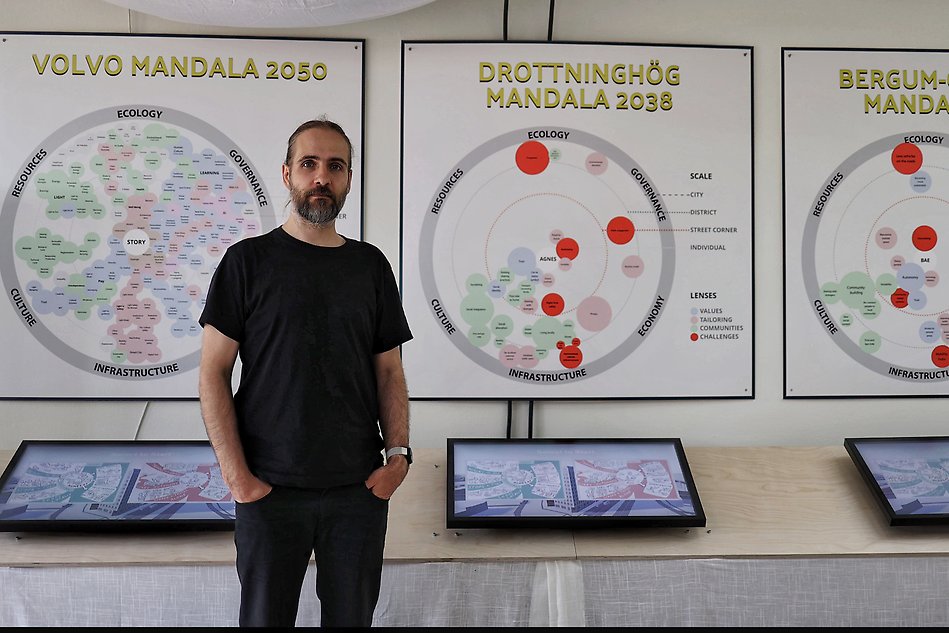Important to build trust between humans and technology
How can you build trust between humans and technology? Is it possible? And why is it important? Kaspar Raats, a PhD student in informatics at Halmstad University, explores these questions in his doctoral thesis.

”My research helps intelligent technology development to find a direction and purpose and to shift from technology-centred and engineering perspectives to more responsible, trustworthy and inclusive practice.”
Kaspar Raats
The field of autonomous vehicles (AV) is continuously growing and the solutions are becoming a bigger part of our cities. But introducing and integrating new technology can create new challenges, such as trust regarding the technology. However, research and development in the area are often technology-centred and tend to test the trust parameter in a laboratory rather than a real-life setting. This is something that Kaspar Raats finds problematic.
“Even when focusing on people’s trust in autonomous vehicles, the attention is on technology-related aspects and how to manipulate them to build people’s trust.”

Kaspar Raats defended his doctoral thesis on December 8 at the School of Information Technology at Halmstad University.
Involved users creates accepted products
When developing technology without integrating and involving users, there is a risk of the products not working optimally in the cities or being accepted by the users. For example, electric scooters came to be a well-used mobility alternative to cars a few years ago. The scooters drastically increased in numbers, as many pedestrians found them practical. At the same time, many pedestrians felt less safe on the pavements, and many accidents were reported. This resulted in restricting and even banning electric scooters in some cities. So, a good intention, such as reducing the number of cars on the roads, is not always sufficient when developing a product.
“My research helps intelligent technology development to find a direction and purpose and to shift from technology-centred and engineering perspectives to more responsible, trustworthy and inclusive practice”, says Kaspar Raats.
Gap of trust between users and producers
Kaspar Raats claims that there is a gap between the intelligent vehicles and mobility services developed by companies, and the users’ acceptance of and trust in them. In his thesis, he argues that AV development needs to shift from focusing on trust as a technology attribute to trustworthiness as a continuous process.
He suggests that it can be achieved through the design ethnographic staging of collaborative learning and evolvement activities with stakeholders from different disciplines and sectors. This can be workshops and other events where different stakeholders gather to learn together from design ethnographic materials and data that is collected from a people in a real-world context. In other words, different parties with various competencies need to collaborate to achieve a more comprehensive and inclusive approach when developing products.
“Trustworthy AV development will increase people’s trust in AV’s and help reach the anticipated societal benefits of AV’s. In my thesis, I offer a novel and timely Trustworthy Algorithm Design (TAD) framework that demonstrates how being responsive, interventional, intentional and transdisciplinary fuels and nudges autonomous vehicle development towards becoming a trustworthy practice”, says Kaspar Raats.
About Kaspar Raats
What is your educational background?
I have a Bachelor’s degree in Computer Science from Tallinn University of Technology in Estonia and a Master’s degree in Interaction Design from Chalmers University in Sweden.
When did you come to Halmstad University?
I started my PhD journey on 1 January 2018. So, about six years ago.
When and how did your interest in human-technology research start?
I was mainly interested in exploring and experimenting with this research project’s underlying design ethnographic methodology. Trust and intelligent vehicle technology offered an exciting and complex case to study.
How come you chose Halmstad University for your doctoral education?
As my primary supervisor, Vaike Fors, is the only professor in Design Ethnography in Sweden, it was a no-brainer to apply for this PhD position at Halmstad University.
Exciting collaborations within the field
During his doctoral education, Kaspar Raats met and collaborated with many others who are also interested in the interaction between technology and humans, such as the professors Vaike Fors and Magnus Bergquist and Senior Lecturer Jesper Lund, all at Halmstad University and project partners at Gothenburg City, Helsingborg City and Volvo Cars Sweden.
“I have met many wonderful, intelligent, and competent individuals. Conducting my research at the School of Information Technology at Halmstad University has been absolutely right!”, says Kaspar Raats.
Kaspar Raats will continue to explore and study the field of autonomous vehicles and human-centred trust, especially focusing on bringing real-world context and peoples’ perspectives into the algorithm design practice.
Text: Anna-Frida Agardson
Top photo: iStock
Portrait photo: Patrik Palo
About the doctoral defence
Thesis title: Towards trustworthy intelligent vehicle technology development External link.
External link.
- Chair of the defense:Professor, Maria Åkesson, Högskolan i Halmstad
- Opponent:Professor Johan Redström, Umeå Institute of Design, Umeå University
- Examination board:Professor Barry Alan Brown, University of Copenhagen, Professor Jonas Ivarsson, Gothenburg University, Professor Alexandra Weilenmann, Gothenburg University.
- Supervisor: Professor Vaike Fors, Halmstad University

